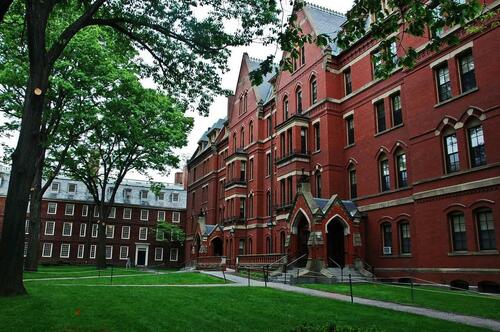Harvard University is feeling the impact of the Supreme Court's decision to ban the use of race in college admissions - as the woke Ivy League institution has reported a noticeable decline in the number of back students in its incoming class, marking a significant shift in the demographics of one of America’s most elite institutions.

According to a statement released by Harvard on Wednesday, black students make up just 14% of the new class of first-year undergraduates, down sharply from 18% last year. Meanwhile, latino students saw a bump, now accounting for 16% of the class—up 2 percentage points. Asian American students, who were at the center of the affirmative action debate, held steady at 37%, Bloomberg reports.
The ruling has sent shockwaves through the world of higher education, forcing colleges and universities to scramble for new ways to promote diversity. For decades, affirmative action policies aimed to boost enrollment of underrepresented groups, particularly black and hispanic students, while asian applicants were often perceived to be disadvantaged by these same policies. Now, it appears the tables are turning.
Columbia University also reported a significant drop in black freshman enrollment, with the percentage plummeting from 20% to 12% in just a year. Conversely, Asian American or Pacific Islander students at Columbia surged, jumping 9 points to 39%. Similar trends were observed at other prestigious schools, including MIT, Brown, and Tufts.

That said, Yale and Princeton, two of Harvard's fiercest rivals in the Ivy League, reported a steady percentage of black freshmen, but both schools saw a slight dip in Asian American enrollment.
Harvard, known not only for being the oldest but also the richest college in the U.S., insists it remains dedicated to fostering a diverse student body. "Our community is strongest when we bring together students from different backgrounds, experiences, and beliefs," said William Fitzsimmons, Harvard’s dean of admissions and financial aid. Still, the university revealed that 8% of its incoming class chose not to disclose their race or ethnicity, double the 4% from last year - a possible indication of the uncertainty surrounding the new admissions landscape.
Harvard was a named defendant in the Supreme Court case along with the University of North Carolina. In UNC’s freshman class, the share of Black freshmen declined to about 8% from almost 11% a year earlier. Asian American students edged up by a percentage point to nearly 26%. -Bloomberg
The Supreme Court ruling was a major victory for Students for Fair Admissions, the group that argued Harvard unfairly penalized Asian Americans during the admissions process by giving them lower ratings on subjective measures like leadership and likability, while favoring black and hispanic applicants. Chief Justice John Roberts noted in the ruling that universities can still consider how race has affected an applicant's life, “be it through discrimination, inspiration or otherwise.”
In response, Harvard has tweaked its application process, now asking students to reflect on how their life experiences, achievements, and extracurricular activities have shaped them. However, this year, admissions officers were not privy to applicants' self-reported answers regarding race and ethnicity, nor could they see aggregated data.
Looking ahead, Harvard and several other top-tier universities are bringing back standardized testing requirements for applicants in 2025—a move that could further influence diversity numbers in the future.
To counter the decline in diversity, Harvard is stepping up its recruitment efforts, including a new rural recruitment initiative and continuing programs targeting minority students and first-generation college hopefuls. As for financial accessibility, about 21% of this year’s 1,647 first-year students qualified for Pell Grants, a federal aid program for low-income students.